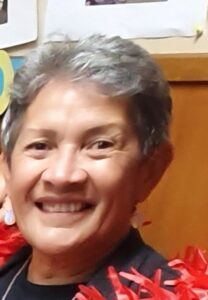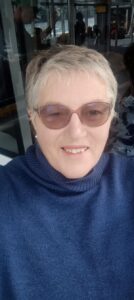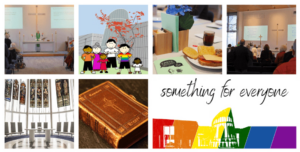Nai Cokanasiga concludes her report on her time at St Georges College, Jerusalem.
We departed from the College on foot to walk the Way of the Cross. We took turns carrying the cross and singing hymns. It was a Friday morning in Jerusalem and most of the shops in the city were closed in preparation for the Sabbath, the traffic was not so busy and there were fewer people. We stopped for the readings all the way to the church of the Holy Sepulchre, and completed the 14 stations. It was quite a morning with the long hours we had to wait to get into the church to visit Jesus’ Tomb.
There was a crowd already there , but only 4 people can get in, so there were queues of people waiting for their turn. It was such an emotional time and I just couldn’t bring myself to believe that I was really there and I was about to see the tomb that I had read about in the Bible. But, when my turn came, I was so nervous and felt so weak to my knees with all these mixed feelings, I found myself in tears when I was actually inside. It was too much to take in and I was overwhelmed by my feelings. What I saw in there was just like a dream.
Masada and the Dead Sea
This was the long awaited trip as we were all interested to see Masada, and to float in the Dead Sea. It was so hot when we arrived at Masada, but we were all so eager to jump into the cable car and to get to the top of the Masada. When we got to the top , Mary June took us to all the excavation sites There was so much to learn ,and take in with the height. Looking down, you’re just in a completely different world altogether. I was overwhelmed with the view and the heat. We never stopped drinking our water- just as well they have cold water stations to fill our bottles.
There was nothing but rocks, stones, dust, sand and a complete desert, very dry but with cool air when we got to the lookout. I just can’t imagine how people could build their houses on this very top of the mountain, like what we saw at the Masada. We learnt that, in those days, donkeys were used to carry water to the very top of the mountain. Some sort of string was used to sling the donkeys up with drums of water on their backs.
Bethany and El Azairia
- A visit to the Church of St. Mary and Martha
- Tomb of Lazarus (John 11: 1 – 46)Ghosh (Emmaus)
- The final site visit was to the Crusader Church in Emmaus where we had our final Holy Eucharist conducted by Reverend Richard.
Luke 24: 13 – 35 – “The Walk to Emmaus”
Visiting Emmaus on a beautiful afternoon brought the scripture alive: when the two followers of Jesus were walking towards this village, which is now a quiet little town, about 11 kilometres from Jerusalem. As the disciples were busy talking about what had happened in Jerusalem, the Lord joined them and walked along with them. The Crusader Church on this busy corner street is a significant landmark for this beautiful familiar story from Luke’s Gospel.
Conclusion
The ‘Palestine of Jesus’ course was coming to an end.
The final reflections were held in the lecture room at the college. It was very emotional for everyone to share their experiences; lessons learnt, spiritual gains, changes within our own perspectives towards religions, and what we wanted to take back with us to make changes in our lives.
Identifying my own failures, weaknesses and faith were the main challenges that I personally faced during the course. I would like to change for my spiritual gain from these almost 3 weeks of study, site visits and learning experiences I was exposed to. Weaknesses in reading my Bible daily and my prayer life were my main issues, which turned into my failure in my spiritual growth, I must admit .
After coming back from this Palestine of Jesus course, there was a lot of improvement as I personally witnessed. My eagerness to read my Bible daily has increased, with new interest and spiritual fulfilment, as I recall all the names of places & sites I had been to in the Holy Land in visioning the time of our Lord’s mission here on earth.
We had a wonderful event for the Presentations of Certificates
and the Farewell Dinner.
Thanks To…
My great appreciation to the St. John’s Trust Board for allowing such a blessed opportunity for lay people in the Diocese of Polynesia, and for funding each student who makes the trip every year. St. George’s College in Jerusalem is such a great place to be in, with beautiful and wonderful staff. There was a great group of people, from USA, Canada, Australia, UK and Fiji to make up the 16 students who attended the “Palestine of Jesus” course from 15 – 30 July 2019.
My sincere thanks and appreciation to St. George’s College course leaders: The Reverend Canon Mary June Nestler, Course Director & Lecturer, and the Very Reverend Canon Richard Sewel, Dean. I am grateful for their wonderful leadership, and for taking care of us as if we were children in their own care and protection, always making sure that no one was left behind with their everlasting head counts. I enjoyed every day of our stay, even though it was hot and sometimes the heat was just unbearable but it was a blessing all the way, in what we learnt, saw, experienced and studied that made each one of us spiritually fulfilled in our own unique way.
Last but not the least, I must say ‘Vinaka vakalevu’ to our dear Esther Naicegulevu, for her great love, support and hard work that contributed a lot to the success of our trip to the Holy Land. Esther, I know, has always been working behind the scene to enable everyone who has gone to St. George’s College to get their application through. She has organized air tickets and allowances, as well as briefing us on the course programs etc. It is a lot of work for every trip every year, and we were the lucky group to have made this trip with Esther among us. My acknowledgement to the Diocese for the picking of names and having faith in us, as representative of the Diocese of Polynesia.
May God bless us all, Vina duriki.
Called to be Peacemakers
The strongest call from this hui for me was the message we as kin are called to be peacemakers, co- creators with God and that loving leaders are a very powerful thing.
Renewing friendships and forming new relationships was a highlight for me as women shared from their strengths and vulnerabilities. The fun activities at the beginning to build connections did just that and set the scene for much laughter, thought provoking and stimulating talks by leaders and varied worship opportunities.
The chance to reflect on our own ministry and leadership style was a common thread, with sharing in small groups creating a stronger bond and recognising the strengths in others.
On reflection PechaKucha sessions left the strongest lasting impressions on me as I felt I got to know more about each woman from hearing their energy and enthusiasm for one of their passions.
It was a delight to have so many younger women them who brought new perspectives and insights, in particular through a justice lens.
I felt privileged to be able to attend and wished more women from our Diocese could have been able to participate and have their batteries re- charged as I was able to.
Nou te rourou, naku te rourou, ka ora te iwi.
From my food basket and your food basket
there is plenty for everyone.


